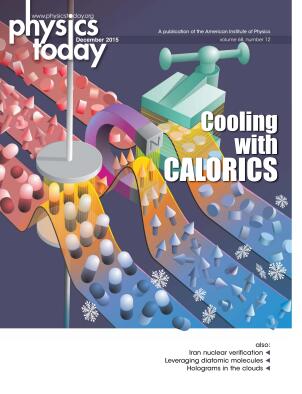A new probe for a changing constant
DOI: 10.1063/PT.3.3007
Water in distant galaxies is difficult to detect from Earth because the molecule lacks favorably placed spectral transitions. Astronomers seeking a proxy turn instead to water’s protonated form, hydronium (H3O+), whose lowest vibrational transitions lie in the millimeter band. Now Vladimir Špirko of Charles University in Prague and his collaborators have identified another use for hydronium: as a probe to determine whether the proton-to-electron mass ratio, μ, varies. Given that gluons, not quarks, make up most of the proton’s mass, variations in μ could arise if the strong nuclear force changes through cosmic time, as some theorists have speculated. The energy of a vibrational state depends on the molecular mass and therefore on the proton mass and μ. When those vibrational states lie close to inversion and rotational states, the μ dependence strengthens. To determine how sensitive those combined states are to variations in μ, Špirko and his collaborators calculated hydronium’s potential energy and dipole moment as functions of the positions of its constituent atoms. They then fed those functions into a nuclear motion code to calculate the transition energies. It turned out that some of the transitions could indeed serve as probes. The difference between two of them—from the ground state to the third excited state—was about four times more sensitive to μ than the methanol transitions used earlier this year to constrain the value of Δμ/μ during the past 7 billion years to be no more than 10−7. (A. Owens et al., Mon. Not. R. Astron. Soc. 454, 2292, 2015, doi:10.1093/mnras/stv2023
